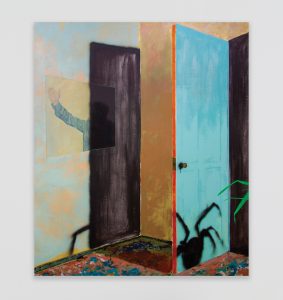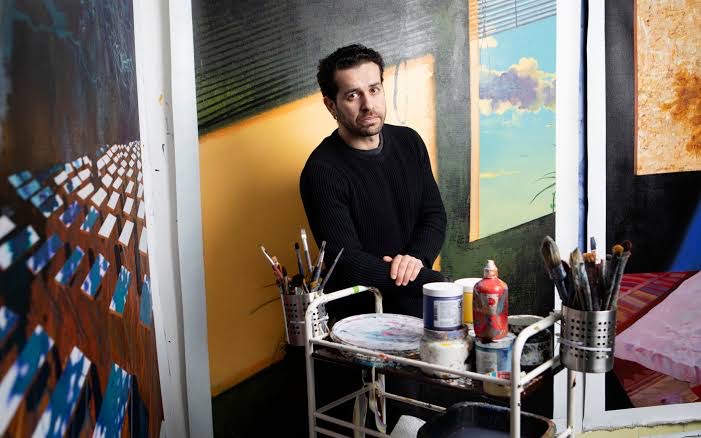Pratiksha Shome
The toppling form of Mohammed Sami’s silhouetted figure in The Fountain I (2021) might be more recognisable. Here, in Firdos Square in Baghdad, stands the well-known statue of Saddam Hussein, surrounded by red-painted water jets from a neighbouring fountain that mimic spurting blood. Saddam, who was formerly Sami’s boss, is depicted in the artist’s work despite having been demolished long ago.

Courtesy: Art in America
Sami, who was born in Baghdad in 1984, was a teenager when he began working on propaganda paintings of Saddam Hussein in Iraq. Sami briefly assisted in the recovery of plundered artworks for the Iraqi Ministry of Culture following the American-led invasion before emigrating to Sweden in 2007 and subsequently to London, where he finished his MFA at Goldsmiths in 2018. He has gained recognition with his softly menacing paintings since participating in the most recent Carnegie International and presenting at Luhring Augustine in New York. A clue to his fascination in Islamic miniatures as a youngster may be seen in many of his works’ small windows and distorted perspective of the household rooms. Saddam’s presence is obvious even in these private areas. In the year 2021’s Infection II, a house has a portrait of Saddam. Once more, his face is hidden in shadow, and his profile is also unsettling due to a spidery houseplant. It’s a disturbing sight where the possibility of violence seems to creep into the home.
Sami’s art uses buried memories coloured by pain and time to express history. “The things I articulate in my artwork are memories hidden in the brain cells that are waiting for a trigger,” he said to the Guardian in March. On the verge of abstraction, domestic settings and turbulent landscapes that may discreetly allude to conflict or sectarian strife can be seen. In a bomb-resistant barrier, In 23 Years of Night (2022), for example, two sheets of plywood shielding windows from a blast appear at a distance using a cross hatching technique reminiscent of Jasper Johns. These paintings, which are primarily painted on linen, frequently feel damaged or worn out.
Sami’s paintings remember the uncomfortable and enduring impacts politics make on daily life through their smooth swings from abstraction to figuration and different shifts in scale in their interiors. In 23 Years of Night, Sami drew a gauzy drape sprinkled with stars over the painted plywood to represent the safe doorway as seen from inside. He seems to be saying that seeing dictatorship and war demands more than just courage. He daydreams of the sky while entrapped in the gloom.
Source: Art in America





